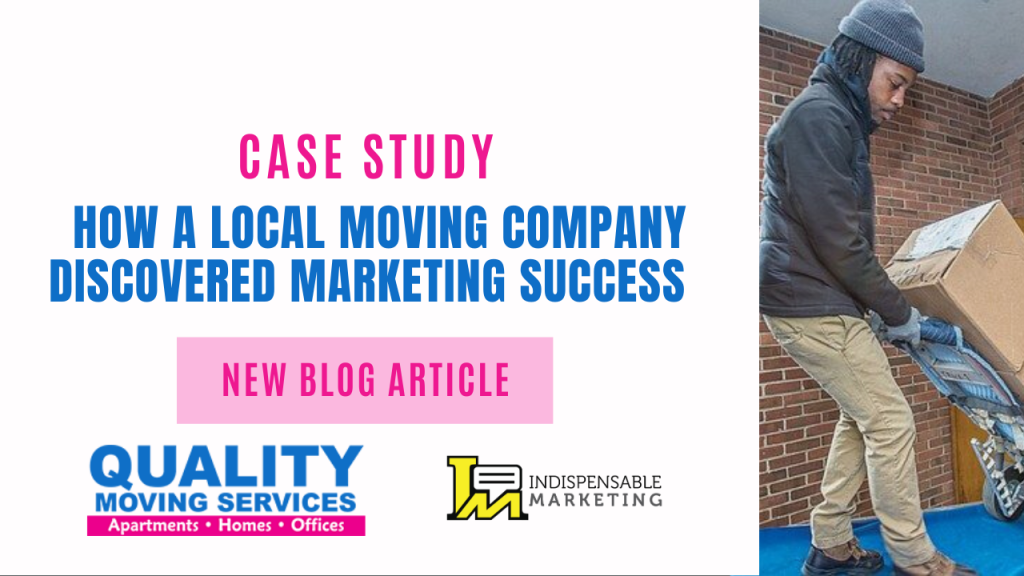Case Study: How a Local Moving Company Took a Different Approach for Marketing Success

As the Founder of Indispensable Marketing, it has been an enormous goal of mine to share our expertise and the stories of small businesses we have helped – from moving companies to bookkeeping firms.
Today’s case study is about Vincent Tucker, CEO of Quality Moving Services , a moving company that’s known for it’s attention to detail and meticulous care of your belongings in the central Virginia area.
With meticulous care and attention to detail, Quality Moving Services, led by founder and president Vincent Tucker, has been helping residential, corporate and government clients relocate throughout Central Virginia since 1989.
Hit-or-Miss Marketing
Vincent had worked with marketing agencies and consultants over the years who had varying degrees of familiarity with his industry. He found that most never really delivered on their promises.
Lacking a holistic and focused strategy to address the way today’s customers gather information, Vincent felt a growing sense that his “shotgun approach” to marketing wasn’t netting maximum return on his investment. He says, “We were all over the place with flyers, outdated materials, coupons, directory listings, pay-per-click advertising, TV commercials. We were also trying digital marketing from national providers.”
After hearing founder and small business marketing consultant, Patrick McFadden speak to a New Virginia: Scaling4Growth class he attended, Vincent decided Indispensable Marketing just might have the marketing solution he needed.
Learn What Works — And What Doesn’t
Unlike previous consultants and agency salespeople who immediately presented what they could do, Indispensable Marketing took a different approach. “Patrick said, ‘We need to do a diagnosis before prescription to learn about your business and understand exactly what your needs are before we tell you what we can do.’” That sounded like a winning proposition to Vincent.
Not only did Indispensable Marketing thoroughly analyze Quality Moving’s existing marketing channels, as well as its reputation with clients and standing among the competition, but they also studied our moving industry.
Indispensable Marketing Cuts Through the Clutter
Vincent recalls, “Indispensable Marketing’s analysis pinpointed the problems we solve for our customers, what aspect of our moving process that customers valued most, ways we could use our website beyond customer acquisition and what things we needed to communicate to earn trust.” With that information, Indispensable Marketing began to reveal exactly how they could help.
Two examples: Vincent saw his website’s traffic and keyword metrics for the first time and learned how content could be improved to make Quality Moving Services appear in the top local search results for Google, Bing and Yahoo over the competition. In addition, the website’s Contact Us form was revamped to gather the information needed to qualify valid leads that needed prompt follow-up.
A Solid Fix is Better Than a Quick Fix
Instead of promising instant miracles with a cookie-cutter approach, Patrick cautioned, “It’s going to take some time. This process approach is not overnight.” But Vincent is already seeing how taking a process approach to marketing is positively effecting how they generate moving quotes, are found online, present their moving services, scale into other geographic locations, and serve their customers. He also feels like the foundation Indispensable Marketing built has 100% helped them navigate through uncertain times with COVID-19.
More importantly, he is confident knowing that Quality Moving Services has a sound online presence that’s poised for growth, and he has a blueprint in hand for how to cost-effectively expand his marketing reach.
Want to learn more? Schedule a consultation with us so we can talk about how to do this for your local business.




